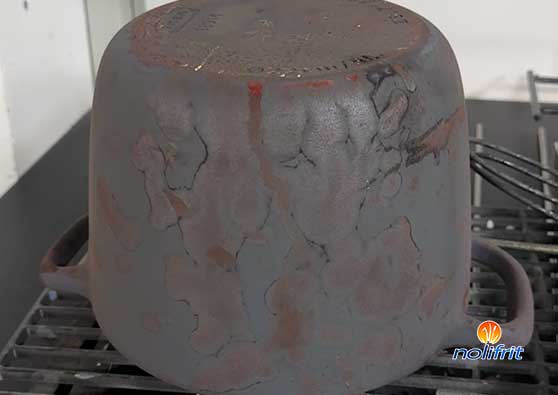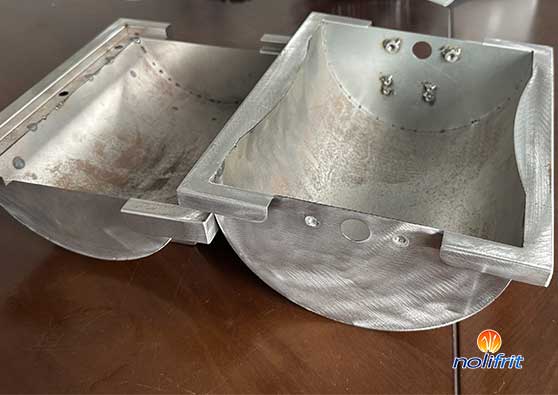The quality of the enamel product body significantly impacts the final enamel product
Modern enamel applications primarily focus on cast iron and steel sheet materials, with stainless steel and aluminum accounting for a minimal market share. It is essential for enamel factories to understand the comprehensive properties of metal materials and their influence on enamel product quality.
I. Cast Iron Substrates
Typically, grade 18 cast iron is preferred. It can bond tightly with enamel frits, providing strong adhesion, a smooth surface, and an aesthetically pleasing appearance, which offers a solid foundation for the enamel.
The impurities in grade 18 cast iron include:
· Carbon: 2-4.3%
· Silicon: 1.6-2%
· Phosphorus: ≤0.06%
· Sulfur: ≤0.03%
· Manganese: ≤0.5%
· Titanium: <0.05%
Experience shows that recycled mixed cast iron has poor performance when remelted for enamel substrates, generally only suitable for rough applications like furnace racks. Impurities such as stainless steel, chromium, nickel, titanium, and copper can severely affect the enamel surface, causing defects like bubbles, pores, Cold Cracking, cracking, and poor adhesion. However, there are better cast iron substrates than grade 18; for instance, enamel cast iron from the U.S. has demonstrated superior surface quality compared to grade 18.

II. Steel Sheet Substrates
Steel sheet substrates can be classified into cold-rolled and hot-rolled categories. Cold-rolled sheets are typically SPCC or DC01 series. SPCC is an Asian designation, while DC01 is a European designation.
· SPCC: Standard drawing sheet.
· SPCD to SPCE: Deep-drawing sheets.
· DC01 to DC04: Similar classifications in Europe.
These two types are commonly used in China due to their low cost, but they can sometimes exhibitfish scales defects.
SPP is a designation for enamel-specific steel from Japan and Taiwan, while the BTC series from Baosteel in Shanghai is specifically designed for enameling, free from fish scales defects, easy to stretch, and has a low breakage rate. However, BTC is more expensive than SPCC by¥500-1000 yuan.
Hot-rolled sheets can be enameled but are prone to scale explosion defects. They are generally sandblasted before enameling, especially for industrial enamel reactors and pipelines.

The quality of the steel sheet directly determines the quality of the enamel. For example, finsh scale defects in enamel can be entirely attributed to the quality of the steel sheet. The "hydrogen theory" in international enamel standards suggests that residual hydrogen in the steel sheet can generate gas during firing. As the enamel product cools, this gas escapes, leading to flaking of the surface enamel, known as fish scale. Additionally, highly polished steel surfaces may lead to adhesion defects.
The suitability of steel for enameling is determined through experimental testing rather than solely relying on the chemical composition, as composition data can be quite similar across different steels. For instance, while SPCC typically has a carbon content between 0.02-0.05%, our tests have shown that a carbon content of 0.02% can lead to fish scales, whereas a content of 0.05% may not. Hot-rolled sheets often exceed 0.05% carbon, yet some do not exhibit fish scales. Interestingly, grade 18 cast iron, with a carbon content of 2-4.3%, has not shown fish scales, indicating that minor variations in carbon content are not the root cause of these defects.
Research from Beijing Iron and Steel Institute on "hydrogen-induced fractures" aligns with the enamel industry's "hydrogen theory," indicating that hydrogen is a primary culprit in enamel defects.